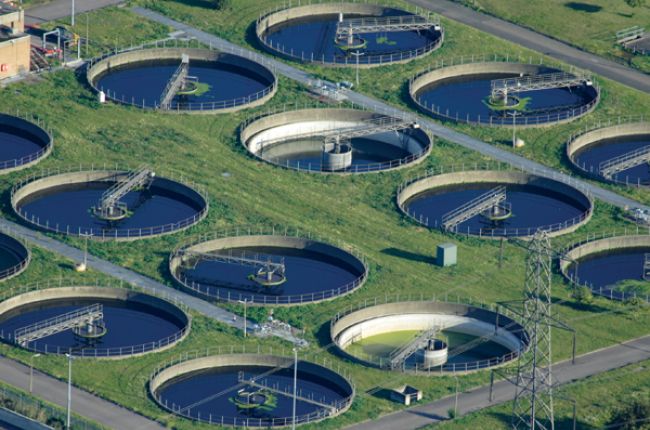Strategic Approaches to Improve Waste Water Therapy Effectiveness and Decrease Environmental Impact
In the world of drainage treatment, the mission for enhanced effectiveness and reduced environmental influence is a continuous challenge that requires tactical remedies. As culture faces the crucial to manage water resources sustainably, a nuanced technique ends up being essential. The assimilation of advanced treatment innovations, energy-efficient processes, source healing strategies, improved nutrient elimination techniques, and clever surveillance and control systems represents a diverse framework for dealing with these pushing worries. Nonetheless, what exists at the core of this complex web of techniques is the possible to revolutionize the means we approach waste water treatment, not equally as a process of disposal, however as a beneficial opportunity for technology and ecological stewardship.
Advanced Therapy Technologies
Advanced membrane layer filtering systems have actually reinvented innovative wastewater treatment processes, dramatically improving the elimination of pollutants. These cutting-edge systems operate forcibly water through a semi-permeable membrane layer, effectively dividing contaminations from the water stream. The membrane's tiny pores catch contaminants such as germs, infections, and put on hold solids, permitting only purified water to go through. This modern technology has actually shown to be very efficient in getting rid of a variety of impurities, consisting of drugs, hefty steels, and organic substances, which are typically challenging to eliminate through traditional therapy techniques.
Moreover, membrane layer filtering systems use many benefits over standard treatment methods. In addition, these systems are extremely versatile and can be easily integrated into existing therapy plants or used as standalone systems for decentralized applications.
Energy-Efficient Procedures
The combination of energy-efficient processes in wastewater therapy systems is critical for enhancing source application and lowering operational costs. By carrying out energy-efficient modern technologies, therapy plants can dramatically lower their carbon impact and general environmental influence. One crucial method to improving energy performance in wastewater treatment is the use of innovative aeration systems, such as fine bubble diffusers or surface aerators, which can enhance oxygen transfer performance and minimize energy intake. Additionally, incorporating power healing systems, like anaerobic digestion for biogas manufacturing or utilizing excess warmth for thermal procedures, can aid offset energy needs and promote sustainability.
Moreover, enhancing process control and automation with making use of advanced sensors and keeping track of systems can boost overall energy performance by changing procedures in real-time based upon actual demand and conditions. Implementing energy audits and on a regular basis monitoring energy performance indicators are essential techniques to recognize areas for improvement and track energy-saving efforts efficiently. In general, the fostering of energy-efficient processes in wastewater treatment not just profits the atmosphere however likewise contributes to lasting cost savings and operational sustainability.
Source Recuperation Approaches
With a concentrate on optimizing source utilization and sustainability in wastewater treatment systems, the implementation of source recuperation methods becomes a pivotal element in boosting operational performance. Resource recuperation strategies in wastewater treatment involve the recognition and removal of beneficial sources from the waste stream, therefore turning what was when thought about waste into a beneficial asset. By carrying out resource healing strategies such as nutrient removal and healing, power generation from natural issue, and the manufacturing of recyclable water, wastewater treatment plants can lessen ecological influence while taking full advantage of efficiency.

Improved Nutrient Elimination Techniques
Carrying out sophisticated nutrient removal methods is essential for optimizing the performance of wastewater treatment systems. Enhanced nutrient removal plays a critical duty in lessening the environmental influence of cured effluent discharged right into water bodies. One of the crucial methods made use of for enhanced nutrient elimination is the procedure of organic nutrient removal (BNR), which involves the removal of nitrogen and phosphorus through biological procedures. This can be accomplished with the use of specialized microbes that can transform nitrogen substances into inert nitrogen gas with denitrification, and gather phosphorus within their cells via a procedure called boosted organic phosphorus elimination (EBPR)

In addition to BNR, advanced therapy approaches such as membrane layer bioreactors (MBRs) and built wetlands can also be employed to enhance nutrient elimination performance. By integrating these innovative nutrient removal methods into wastewater therapy municipalities, markets and systems can effectively decrease nutrient pollution and secure the environment.
Smart Tracking and Control Solution
Using cutting-edge innovation, the assimilation of clever monitoring and control systems changes the operational efficiency of wastewater treatment centers. These systems incorporate sophisticated sensing units and data analytics to continuously keep track of essential specifications such as pH degrees, turbidity, dissolved oxygen, and flow prices in real-time. By collecting and analyzing this information, drivers can gain valuable insights into the efficiency of the therapy procedures, enabling aggressive modifications to maximize therapy efficiency.
Smart tracking and control systems likewise sustain remote surveillance capacities, permitting operators to access real-time information and control functions from off-site locations. This remote access improves operational versatility and responsiveness, enabling quick interventions in case of system malfunctions or variations in influent quality. The anticipating upkeep abilities of these systems assist protect against devices failures and minimize downtime, inevitably boosting the general integrity of wastewater treatment procedures.
Conclusion
To conclude, strategic approaches such as sophisticated treatment innovations, energy-efficient procedures, resource healing methods, enhanced nutrient removal strategies, and clever monitoring and control systems play a crucial duty in improving wastewater therapy effectiveness and minimizing environmental influence. By applying these strategies, wastewater treatment plants can improve their overall performance, lower power usage, recuperate valuable sources, and guarantee compliance with ecological laws. These strategies are necessary for lasting and reliable wastewater management address techniques.

In conclusion, strategic approaches such as advanced therapy innovations, energy-efficient processes, resource i loved this recuperation techniques, boosted nutrient elimination strategies, and smart surveillance and control systems play an essential function in boosting wastewater therapy effectiveness and minimizing ecological impact.
Comments on “Cost-Effective Solutions for Large-Scale Waste Water Treatment Facilities”